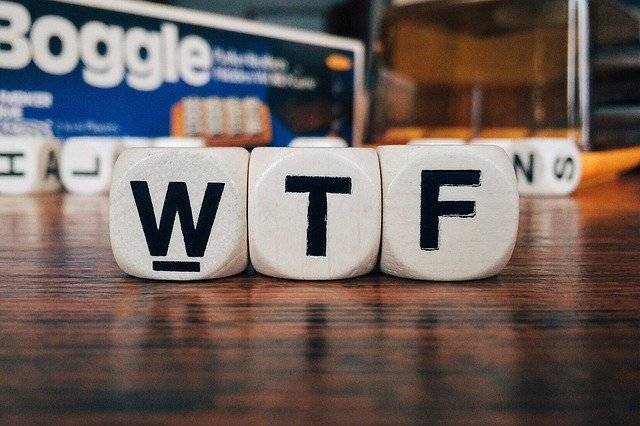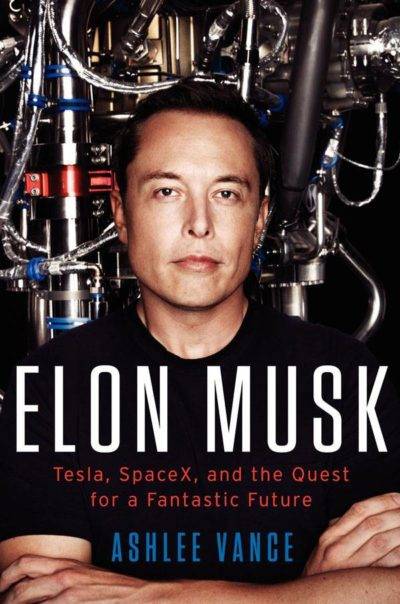
Never discount the importance of simplicity in a presentation. One way to simplify is to eliminate jargon. One way to eliminate jargon is making sure that the audience understands any acronyms in the presentation.
These days, acronyms are everywhere. Here is one list of business and finance acronyms. Some of them (CEO – Chief Executive Officer; B2B – Business-to-Business; YTD – Year to Date) are well known; others less so.
Regardless of the level of sophistication of the audience, the chance for misunderstanding increases with the use of acronyms. For example, some people know COB (close of business) but not EOD (end of the day) and vice versa. Thus, COB—which is close to COD (cash on delivery)—may or may not be clear to the recipient of an email requesting that a product be delivered COB.
Indeed, people make mistakes with acronyms that they use all the time:
Elon Musk on acronyms
In his terrific biography of Elon Musk, the founder of Tesla and SpaceX, Ashlee Vance gives us an inside look into one of the most brilliant minds of the 21st century. The book offers many insights into the man and how he has reinvented the way in which we can do business.
I particularly enjoyed Vance’s recounting the time, in May 2010, when Musk sent an angry email to all the employees at SpaceX. He was concerned about the excessive use of acronyms in the company. The subject line of the email was “Acronyms Seriously Suck” and this is how it read:
There is a creeping tendency to use made up acronyms at SpaceX. Excessive use of made up acronyms is a significant impediment to communication and keeping communication good as we grow is incredibly important. Individually, a few acronyms here and there may not seem so bad, but if a thousand people are making these up, over time the result will be a huge glossary that we have to issue to new employees. No one can actually remember all these acronyms and people don’t want to seem dumb in a meeting, so they just sit there in ignorance. This is particularly tough on new employees.
That needs to stop immediately or I will take drastic action—I have given enough warnings over the years. Unless an acronym is approved by me, it should not enter the SpaceX glossary. If there is an existing acronym that cannot reasonably be justified, it should be eliminated, as I have requested in the past.
For example, there should be no “HTS” [horizontal test stand] or “VTS” [vertical test stand] designations for test stands. Those are particularly dumb, as they contain unnecessary words. A “stand” at our test site is obviously a *test* stand. VTS-3 is four syllables compared with “Tripod,” which is two, so the bloody acronym version actually takes longer to say than the name!
The key test for an acronym is to ask whether it helps or hurts communication. An acronym that most engineers outside of SpaceX already know, such as GUI, is fine to use. It is also ok to make up a few acronyms/contractions every now and again, assuming I have approved them, e.g., MVac and M9 instead of Merlin 1C-Vacuum or Merlin 1C-Sea Level, but those need to be kept to a minimum.
This passage struck a chord with me. I worked for five years as a lawyer at the World Health Organization. The organization has hundreds of acronyms for different departments, processes and systems and I was probably able to remember two dozen or so at most. My favourite was GSM, which stands for Global Management System, an important online administrative tool. The acronym GMS already existed, so they created a new one.

Think about acronyms in the context of your presentations. It is one thing to use them with people who understand them; it is an entirely different matter when speaking to an outside audience. What is obvious to you will not necessarily be obvious to them. A confused audience means a reduced chance of getting your message across.
8 tips for using acronyms in a presentation:
- As Elon Musk wrote, “The key test for an acronym is to ask whether it helps or hurts communication.”
- Keep the number of acronyms in a presentation to a minimum.
- Well-known acronyms (e.g., USA, CEO, SOS) need no explanation.
- The more sophisticated the audience is with regard to the topic, the more leeway you have using acronyms.
- Notwithstanding Nos. 3 and 4 above, err on the side of caution.
- The first time an acronym you use on a slide, you should write the name out in full and then define the acronym; e.g., “We need to hire a Certified Public Accountant (CPA).”
- Once you define a term, you can use the acronym on subsequent slides. However, it is a good idea to repeat the name in full, at least from time to time, to ensure that the audience understands.
- Be especially careful when using acronyms or abbreviations that can have multiple meanings. For example, “n/a” (also written “N/A”) can mean “not applicable”, “not available” or “no answer”.
Final thoughts
Acronyms can be useful in a presentation. Just be sure that they are a help and not a hindrance. Otherwise, you might well get a question from the audience like this one from Robin Williams in a classic scene from Good Morning Vietnam.
















8 Replies to “Acronyms can seriously suck”
Great article. I do agree fully that we use too many acronyms especially in the Medical field. Customers are lost daily as a result. R
Thank you for the comment, Renate. Yes, the medical field is ripe for acronyms.
What an interesting insight into Elon Musk’s leadership style, and that he’s the one who approves new acronyms – if any! (I’d have thought a CEO would delegate that task!)
When I saw this article, my 1st thought was that it might be about acronyms that are made up, but whose whole purpose is to help listeners remember the content. Those can be extremely helpful. Examples are: SMART goals, Nancy Duarte’s concept of STAR moments (Something They’ll Always Remember), and my own concept of PACE (which means to make content Personal, Actionable, Conversational, and Emotional).
I suppose acronyms like that are intended to be explained to listeners (in contrast to how most acronyms are used), and to make the content “sticky”. So as you say, hopefully they’re a help, not a hindrance.
Thanks, Craig. Yes, my focus was on acronyms that are part of the lingo of a given profession or organization. I am a big fan of creating acronyms to help people remember something. Indeed, in “Made to Stick”, the Heath brothers use “SUCCES” as a way of helping us remember Simple, Unexpected, Concrete, Credible, Emotional and Stories.
Thanks for the comment, Rashid, and thanks for reminding us of Sorenson’s four pillars.
Another great posting on an important topic: simplicity in communications. Thanks.
If acronyms do not contribute to one or more of Ted Sorensen’s four pillars (Clarity, Brevity, Levity, Charity) of good communication, then they should be removed.
John, you might be interested in my latest post, which covers 5 benefits of creating an acronym to represent your talk’s key message. Appropriately, those 5 benefit use an acronym too – MOIST.
(The post also mentions 4 reasons why SUCCES from “Made to Stick” is a pretty bad acronym!)
To read the post, just click on my name above.
Thanks, Craig. Those kinds of acronyms are helpful. And they work best when there is only one such acronym in the presentation and none of the other ones.